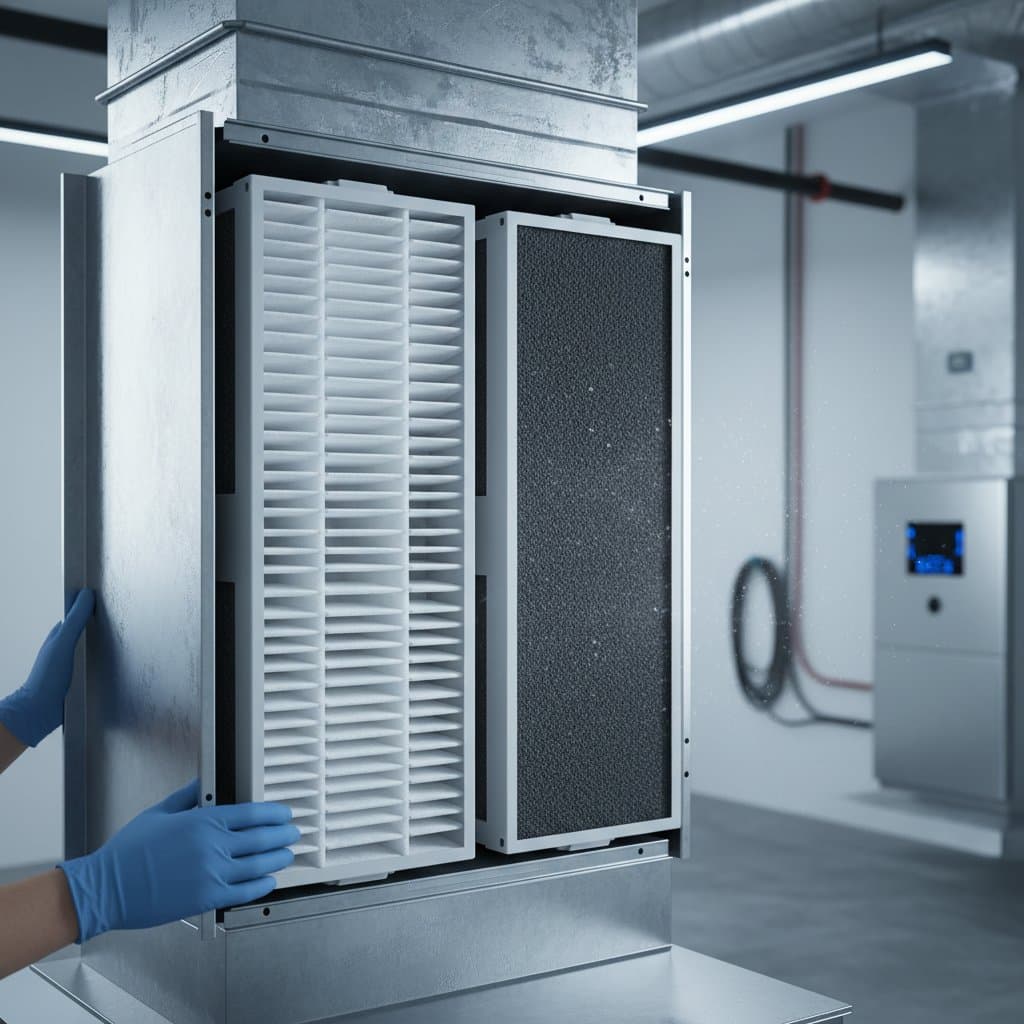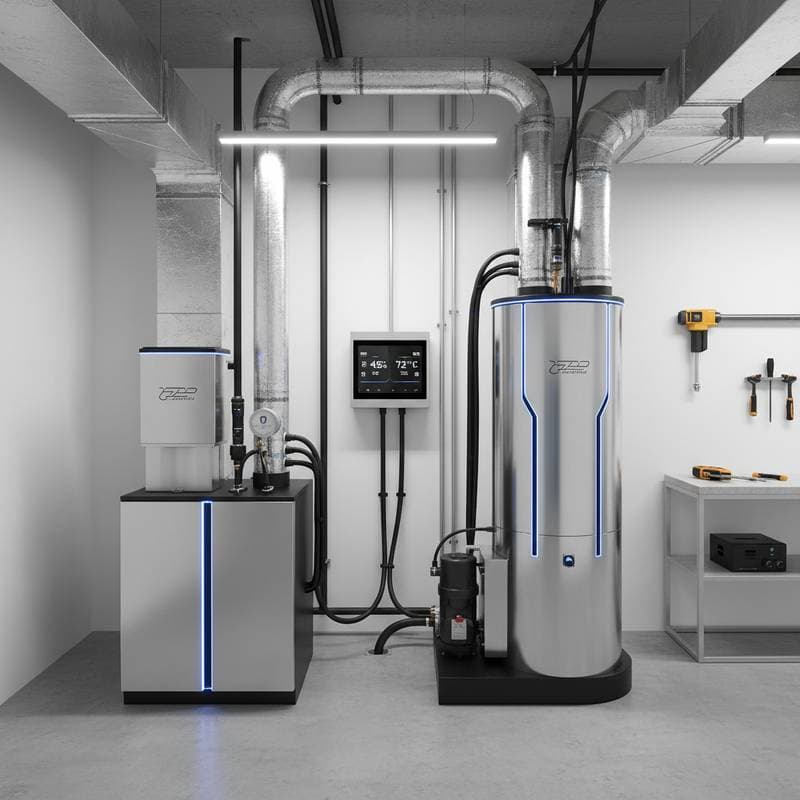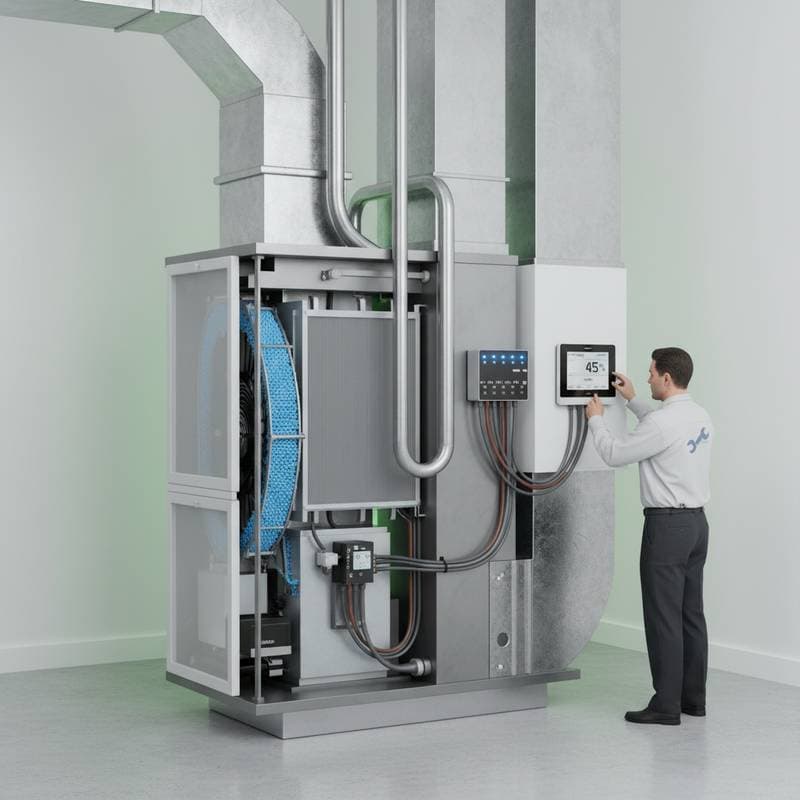Moisture-Wicking Filters Stop Mold Before It Spreads
Modern moisture-wicking HVAC filters offer an effective solution for mold prevention without requiring a full system overhaul. These filters manage airflow, control humidity, and enhance filtration to safeguard health and equipment.
The Risks of Moisture in HVAC Systems
Moisture plays a complex role in indoor comfort. Adequate levels prevent dry air, yet excess humidity transforms ducts into environments where mold flourishes. In humid areas or during wet seasons, condensation accumulates on coils, filters, and vents, allowing spores to proliferate.
Even minor mold in the air handler affects the entire system. Spores travel through ducts to all served rooms, compromising air quality and efficiency. Moldy filters impede airflow, compelling the system to labor more and increasing energy costs by 10 to 15 percent.
Benefits of Moisture-Wicking Filters
Moisture-wicking HVAC filters provide a reliable upgrade for mold-prone homes. Their specialized fibers repel water while capturing dust and pollen. By maintaining dryness, these filters eliminate the conditions mold requires to develop.
Professionals recommend them for coastal regions, high-humidity zones, and older systems prone to sweating during cooling. Beyond reducing mold, they stabilize humidity for superior indoor air quality.
When properly installed, these filters deliver key advantages:
- Minimize mold on coils and ducts
- Enhance air quality for those with allergies
- Prolong system life by averting corrosion
- Optimize airflow for better energy use
Mechanism of Moisture-Wicking Filters
Moisture-wicking filters function similarly to moisture-managing athletic fabrics. They draw water away from the surface for rapid evaporation, keeping fibers dry and resistant to mold.
Microfibers within the material generate capillary action to direct moisture outward. This prevents clumping and damp spots common in traditional pleated filters. The outcome is a durable, dry barrier that captures particles effectively without early clogging.
Maintenance Strategies to Prevent Mold and Extend System Life
Regular upkeep maximizes filter performance. Follow these steps:
- Replace filters every 60 to 90 days, or sooner in humid climates or pet-owning households.
- Clear condensate drains to avoid backups; flush with a vinegar-water solution as needed.
- Clean coils during annual service to ensure proper moisture drainage.
- Install a whole-home dehumidifier in very humid areas to maintain 40 to 50 percent relative humidity.
- Seal duct leaks to prevent moist air intrusion and condensation.
Early Detection of Mold Issues
Spot mold before it worsens by monitoring these indicators:
- Ongoing musty smells during system operation
- Dark stains or discoloration around vents
- Worsening indoor allergies like sneezing or itchy eyes
- Sudden rises in energy bills from restricted flow
- Visible condensation on ducts or vents
Upon detecting signs, deactivate the system and consult a professional. Experts handle disinfection and recommend moisture-wicking filters to halt future growth.
Installation and Selection Guidelines
Select and install moisture-wicking filters thoughtfully for best results.
Ensure a precise fit to block air bypass, which could distribute contaminants. Match dimensions to your system's specifications.
Choose a MERV rating of 8 to 13 for effective mold control. Higher ratings trap more particles but may hinder airflow in incompatible systems.
Expect costs of $25 to $60 per filter, justified by reduced repairs and improved air. Inspect monthly in peak seasons and consult technicians for compatibility assessments.
Scientific Principles of Mold Prevention
Mold requires moisture and organic matter to thrive; HVAC filters often supply both through dust and condensation. Moisture-wicking designs disrupt this by integrating hydrophobic and absorbent fibers that redirect water from the surface.
Airflow stays clean as the filter remains arid. Advanced versions feature antimicrobial treatments for added defense.
Indoor air quality specialist Dr. Elena Morris notes, "Homeowners underestimate how small moisture imbalances can trigger major mold problems. A moisture-wicking filter acts like a safeguard, keeping the system dry so spores never gain traction."
Field-Tested Outcomes
Homeowners adopting moisture-wicking filters often see rapid gains. A coastal resident eliminated vent mold and odors after installation and duct sealing, with spore levels dropping 40 percent.
In humid valleys, users report fewer allergies, less dust, and shorter AC cycles for energy savings. Consistent maintenance amplifies these results, surpassing standard filters in air purity and durability.
Optimizing Filter Choice for System Performance
Avoid the highest MERV without verification, as dense filters strain older blowers. Balance filtration with airflow by reviewing manuals or seeking technician input on static pressure.
Safety Protocols and Regulations
Adhere to local codes and manufacturer instructions during modifications. High-efficiency filters may need specialized housings. Disconnect power before handling, and discard single-use filters rather than cleaning them.
For extensive mold, hire professionals using EPA-approved methods and gear. Improper DIY efforts risk spore dispersal.
Enduring Advantages
Moisture-wicking filters extend beyond mold control to foster a healthier home. Stable humidity reduces irritants and protects structures like drywall.
Steady airflow cuts energy use, easing component stress and yielding long-term savings plus extended equipment life.
Steps to Upgrade Your System
Begin by noting your filter size and MERV needs, then select a compatible moisture-wicking option. Combine with routine care and humidity management for cleaner air and efficiency.
Contact certified HVAC specialists for evaluations, recommendations, and installations to achieve optimal results.
Frequently Asked Questions
How often should I replace a moisture-wicking HVAC filter?
Replace every 60 to 90 days, or more often in humid areas or with visible airflow decline. This preserves dryness and efficacy.



